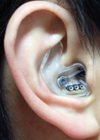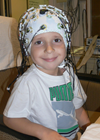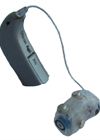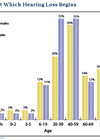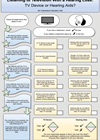Audiology features
The Veterans Hearing Fund
Dawn Bramham introduces us to the newly launched Veterans Hearing Fund (VHF). This organisation aims to improve the lives of military personnel with hearing loss by providing access to technologies, services and bespoke rehabilitation that are not routinely available via...
Audiology Papers of the Year 2015-16
In this short review we have asked Melanie, Carolina, Josephine and Cherilee to consider the best article they have read in the last 12 months and provide us with a short review. All contributors have managed to succinctly highlight the...
What’s new in the cochlea?
Prof Furness in this article rounds up the steps and leaps being made by the scientific community to develop therapies to support, rejuvenate and / or replace the cochlear structures. David’s electron microscope images of the cochlear structures are world...
What’s new in genetic testing for hearing impairment?
Often the first question following the diagnosis of a hearing loss is ‘why?’ In this article Ali Danesh explores the advances made in uncovering ‘why’ from a genetics perspective. Ali describes the panel of genetic tests now commercially available to...
What’s new in protecting hearing?
Preventing an avoidable hearing loss before it begins would be the public health dream. In this article Kathleen Campbell takes us through one option that is showing the potential to fulfil that ambition. Kathleen explains the development of a preventative...
What’s new in electrophysiology?
Steve Bell is a lecturer at the University of Southampton and a member of the British Society of Audiology’s (BSA) Special Interest Group in Electrophysiology. Given the current surge in interest in electrophysiology, both in rehabilitation and diagnostic arenas, Steve...
What’s new in auditory processing?
Auditory processing disorder (APD) has had a controversial history, stemming mainly from lack of scientific rigor and accepted clinical definition. That situation is now changing. Driven by the huge number of people with unaddressed listening difficulties, basic discoveries in neuroscience,...
The Brain’s Connectome – a symphony inside our brains and how hearing loss disturbs the music
Understand us; where do we begin? In this article the authors’ introduce a project that may uncover that our personalities and traits are a product of the interconnected wiring within our brain. The team discusses the Human Connectome Project and...
What’s new in implantable devices? New indications in cochlear implantation
For over 40 years, cochlear implant procedures have steadily increased. Outcomes for patients are improving as a result of modified surgical techniques, a wider portfolio of electrode arrays, advances in programming strategies, access to improved technology and a better understanding...
What’s new in hearing aid technology? Requisites for successful implementation of eHealth in hearing health care
Like Eeyore in AA Milne’s Winnie the Pooh stories it appears we all will soon have a personal cloud, but unlike Eeyore this will be something to celebrate! The future of hearing aid technology is in the cloud argues Uwe...
The challenge of disrupting the hearing care market in the USA
Barry Freeman, an Audiology Consultant of extensive global experience, examines the business model of hearing care service delivery in America. He discusses the challenges the profession has faced, and proposes some food for thought on learning from other health care...
How entrepreneurs can integrate hearables into their clinic
Brian Taylor provides an interesting perspective on market segmentation of the hearing impaired population, and how as clinicians and entrepreneurs we need to be able to recognise the different approaches that are required to address the large percentage of the...







